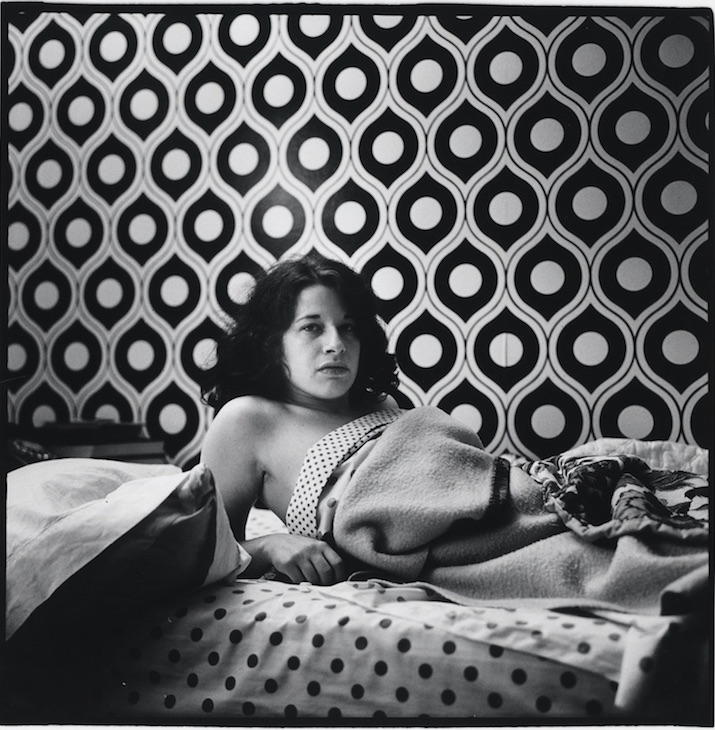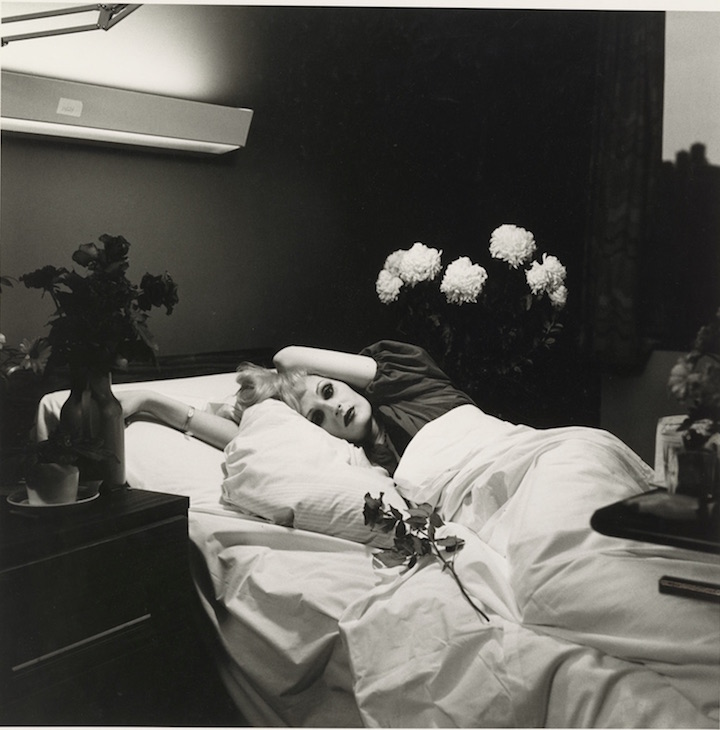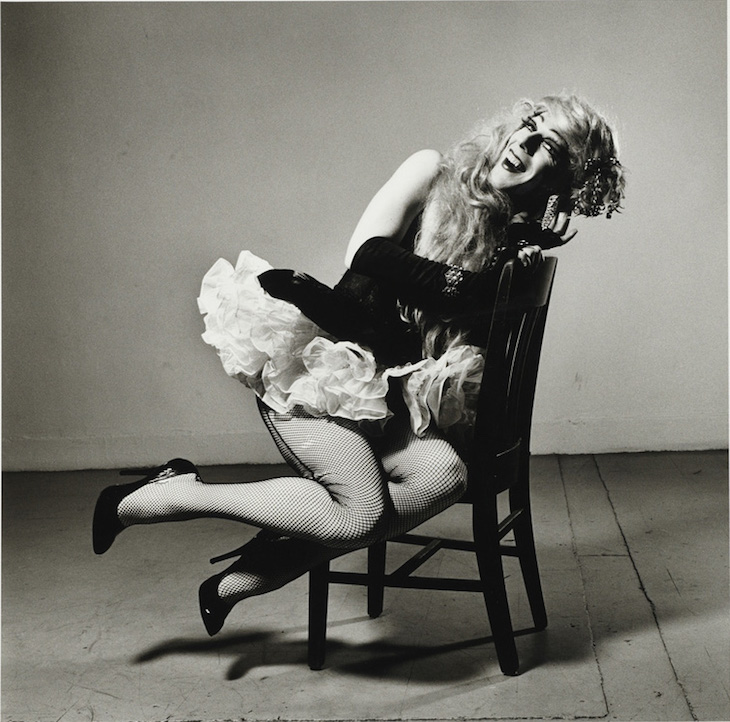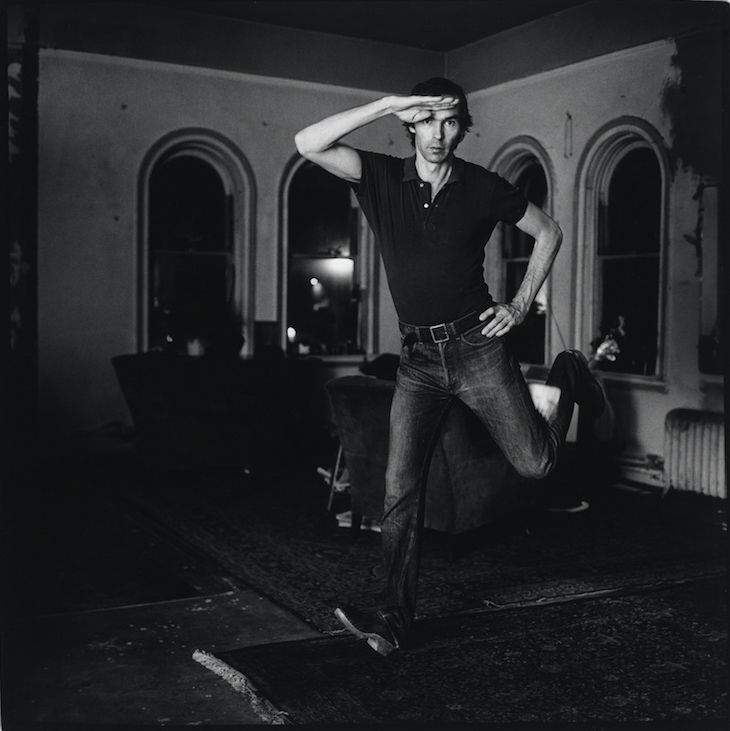Peter Hujar is one of those artists who remained relatively unknown to the larger art world in his own lifetime yet achieved much recognition from other artists of his generation – among his better-known peers are Diane Arbus, Robert Mapplethorpe and David Wojnarowicz (with whom Hujar shared an intense relationship). His reputation has, however, grown significantly since his death from AIDS-related pneumonia in 1987, as his photographs have entered major museums and became the subject of numerous exhibitions in the US and Europe. The current exhibition ‘Speed of Life’ at the Berkeley Art Museum, which has travelled from the Morgan Library and Museum in New York, continues this revaluing of Hujar in a career-spanning survey of the photographer’s work.

Susan Sontag (1975), Peter Hujar. Courtesy Pace/MacGill Gallery, New York and Fraenkel Gallery, San Francisco; © Peter Hujar Archive, LLC
Hujar was a key figure in New York’s downtown art scene; his photographs document aspects of New York’s underground from the late 1960s to the arrival of the AIDS crisis in the ’80s. Hujar initially began working in fashion photography in New York in the 1950s and ’60s, but then dedicated himself to depicting the types of subjects that likely helped keep him from earlier art world acceptance: a candid focus on male bodies, naked and in drag, and a desire to capture the mysterious, often unknowable realities of others.

Fran Lebowitz at Home in Morristown, New Jersey (1974), Peter Hujar. Courtesy Pace/MacGill Gallery, New York, and Fraenkel Gallery, San Francisco; © 1974 Peter Hujar Archive LLC
Working in black and white, Hujar favoured pared-back settings, allowing his subjects to be seen intimately through complex plays of shadow. He frequently portrayed notable cultural friends and acquaintances, including Fran Lebowitz, William S. Burroughs and Susan Sontag, but he just as intently produced finely wrought images of lesser-known figures, alongside careful depictions of animals, buildings, and landscapes. In his portraits he discovered intense geometrics through a range of poses – in the odd hand-on-shin lean of the dancing form of Ethyl Nude (c. 1979), in the muscular dog’s body in Bouche Walker (Reggie’s Dog) (1981), and in the sideways architecture of Collapsed White Shack (c. 1985).
The great stillness of Hujar’s images comes in part from the fact that he often shot his human subjects while they reclined, a technique that contributes to the vulnerability of his portraits. Yet there’s a sense of movement in many of the works on view as well, a result of Hujar’s concentration on contorted physiques or fragmented body parts – such as Paul Hudson, Leg (1969) or Gary Schneider in Contortion (1979) – and in the sharply cropped busts of people sitting or lying down.

Candy Darling on her Deathbed (1973), Peter Hujar. Courtesy Pace/MacGill Gallery, New York, and Fraenkel Gallery, San Francisco; © 1973 Peter Hujar Archive LLC
The exhibition includes arguably Hujar’s most famous portrait, Candy Darling on Her Deathbed (1973). Here, the transgender performer lies dying of lymphoma in a hospital bed, consciously playing her own death scene, bewigged and made up. The idea of life as a performance is a recurring theme in Hujar’s work, which he explored by acknowledging the artifice involved in such acts. Masks and veils that only partially obscure or transform appear frequently in his work, alongside his more direct photographs – such as his depictions of the performance and drag artist Ethyl Eichelberger, whom he showed in a series of poses both understated and unconventional.

Ethyl Eichelberger as Minnie the Maid (1981), Peter Hujar. Courtesy Pace/MacGill Gallery, New York and Fraenkel Gallery, San Francisco; © Peter Hujar Archive, LLC
Even when depicting more prominent or conventional celebrities – such as Isaac Hayes, Peggy Lee, or Madeleine Kahn – he used lighting, makeup, styling, and positions which, while never unflattering, possessed little obvious glamour. He was drawn toward showing the trappings of culture without buying into the artifice it created. Having withdrawn from the world of fashion, Hujar was affected by the grittier developing aesthetics of downtown New York during a period when many aspects of the city were undergoing an unprecedented physical degradation, and a complex social and cultural evolution.
The exhibition frequently juxtaposes images of the inanimate next to the animate, so that the living things Hujar captures often appear in a sense of stasis: the intense stare of Rabbit, Westtown, New York (1978), for instance, as the animal crouches beside a large car tire, or the inscrutable gaze of Donkey in Italy (1978). Much of the inanimate is captured within the ruins of built things, as in the cluttered interior of the room in Ruined Bed, Newark (c. 1985), or the dark, dilapidated space in Hall, Canal Street Pier (1983).

Self-Portrait Jumping (1974), Peter Hujar. Courtesy Pace/MacGill Gallery, New York, and Fraenkel Gallery, San Francisco; © 1974 Peter Hujar Archive LLC
Hujar’s ability to capture the mortal, the ineffable, and the ephemeral continues up to the final image in the exhibition. A still of the sea, Wave–Sperlonga (1978), is placed just below Self-Portrait, Jumping (1974), in which Hujar salutes the camera as he remains frozen eternally in mid-air.
‘Peter Hujar: Speed of Life’ is at the Berkeley Art Museum and Pacific Film Archive until 18 November.














![Masterpiece [Re]discovery 2022. Photo: Ben Fisher Photography, courtesy of Masterpiece London](http://zephr.apollo-magazine.com/wp-content/uploads/2022/07/MPL2022_4263.jpg)
‘Like landscape, his objects seem to breathe’: Gordon Baldwin (1932–2025)